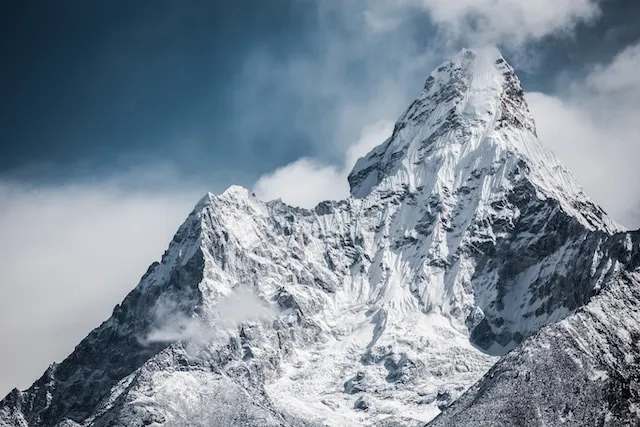Mount Everest.

Mount Everest The World's Roof And Ultimate Adventure.
Standing tall on the roof of the world, has captured the human imagination for centuries.
As the tallest mountain on the planet, it represents breathtaking natural beauty, amazing human achievement, and the unyielding spirit of adventure.
This article explores Mount Everest's fascinating geological relevance, historical significance, and attractiveness for travellers worldwide.
A Geological Wonder:
The Himalayan mountain range, which covers five nations—Nepal, China (Tibet Autonomous Region), India, Bhutan, and Pakistan—includes Mount Everest, also referred to as "Sagarmatha" in Nepali and "Chomolungma" in Tibetan.
The Indian subcontinent and the Eurasian tectonic plate collided millions of years ago, uplifting these enormous peaks and creating the Himalayas.
Height and Dimensions:
The height of Mount Everest has sparked discussion and interest. According to the Great Trigonometric Survey of India, it is 29,002 feet (8,840 meters) tall.
Modern measurements, however, have changed this number. China and Nepal both recognize 8,848.86 meters (29,031.7 feet) as the current official height.
Historical Expeditions:
Long before it was successfully climbed, Mount Everest drew adventurers with its attraction as the highest summit in the world. A British crew made the first known attempt in 1921, and several more followed in the years that followed.
However, the two most well-known expeditions were those commanded by Tenzing Norgay, a Sherpa from Nepal, and Sir Edmund Hillary of New Zealand in 1953, as well as the American expedition commanded by James Whittaker in 1963.
Climbing Challenges:
Attempting to climb Mount Everest is a difficult endeavor. Climbers face serious risks because of the thin air at such high heights, which can cause altitude sickness and other health problems.
Climbers must also negotiate the dangerous Khumbu Icefall, a glacier with deep crevasses and unstable ice slabs.
Above 8,000 meters (26,247 ft), there is a region known as the "Death Zone" where oxygen levels are dangerously low and climbers are particularly susceptible to exhaustion and frostbite.
Environmental Issues:
Mount Everest's prominence has brought the area not only fame but also environmental problems. There are issues with garbage disposal and overcrowding in the Khumbu region.
Over time, trash and abandoned equipment accumulated, prompting attempts to clean up the mountain and encourage responsible tourism.
Cultural Relevance:
For the Sherpa people of Nepal, Mount Everest is not simply a natural wonder but also a place of great cultural significance. They revere the mountain and consider it to be the home of the gods. The Sherpas have been invaluable expedition guides and porters, contributing significantly to climbers' success.
The Grandest Adventure:
For mountaineers and adventurers worldwide, climbing Mount Everest continues to be the ultimate challenge. Physical stamina, mental toughness, and unflinching resolve are required for the voyage.
Climbers brave the elements and their own limitations on the summit day, an exhilarating and intimidating event that allows them to stand at the top of the world.
Conclusion:
The human spirit of discovery and the limitless wonders of our world are both exemplified by Mount Everest. It is a genuinely unusual location due to its magnificence, geological value, and cultural relevance.
The appeal of Mount Everest continues to entice adventurers, explorers, and dreamers from all over the world, despite the fact that climbing its heights is difficult for the faint of heart.
Mount Everest continues to serve as both a real and figurative representation of what humanity is capable of when it dares to aim for the highest heights.
Click here to continue reading our selection of the 7 Natural Wonders of the World.


